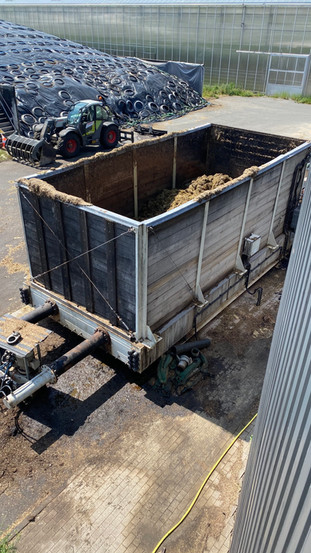Solids feeder: An indispensable tool in industry and agriculture
- Holger Roswandowicz
- Oct 24, 2023
- 2 min read
The role of the solids feeder in various industries cannot be overstated. Whether in food production, the chemical industry or the construction industry, solids feeders ensure the precise feeding of solid materials. But how does such a device work in detail? And what challenges arise in energy management?
Inner workings of a solids feeder: technology and mechanics
A solids feeder consists of several main components: a storage container for the material, a conveying system and a control system. The conveyor system can be designed, for example, as a screw conveyor, vibrating trough or as a conveyor belt. The control system is the brain of the system. It regulates the amount and speed of fed materials based on the entered parameters.
(Control system: Electronic component that controls operations in machines or systems. Conveyor belt: An endless belt that transports materials from one point to another.)
The energy requirement: A sticking point in operational management
Every step in the operation of a solids feeder consumes energy. Motors, conveyor systems and controls are just some of the energy-hungry components. Inefficiency in any of these areas can result in high energy consumption and therefore increasing operating costs.
Electricity Fairy Diary: The Key to Energy Optimization
The electricity fairy diary appears here as an innovative tool. This AI-supported energy monitor not only analyzes energy consumption in real time, but also offers approaches for optimization. With hardware components that communicate via the MQTT protocol, easy integration into existing system landscapes is possible.
(AI: Artificial Intelligence. MQTT: Message Queue Telemetry Transport, a protocol for machine-to-machine communication.)
VIDEO In-depth analysis through the Stromfee diary
The special thing about the Stromfee diary is its ability to analyze energy flows and recognize patterns. These patterns can, for example, indicate inefficient operating phases. By evaluating the data, you can then make targeted adjustments. Maybe the solids feeder motor is running too fast? Or the conveyor system is not working optimally? With the Stromfee diary you can answer these questions and take corrective measures.
Long-term advantages: cost savings and sustainability
Regular monitoring and optimization of energy consumption through the electricity fee diary not only leads to cost savings, but is also a contribution to sustainability. Less energy consumption means lower CO2 pollution and a more careful use of our resources.
Final Thoughts: A Look into the Future
As technology advances and the focus on sustainability increases, intelligent energy management systems such as the electricity fee diary are becoming increasingly important. They enable precise control of energy consumption and contribute to efficiency and ecology in industry.
Hashtags: #Solid doser #Electricity diary #Energy consumption #Energy efficiency #Industrial applications #Sustainability #Operating costs #SmartMonitoring #MQTT #ArtificialIntelligence #Energy management #CO2 reduction




.png)








Comments